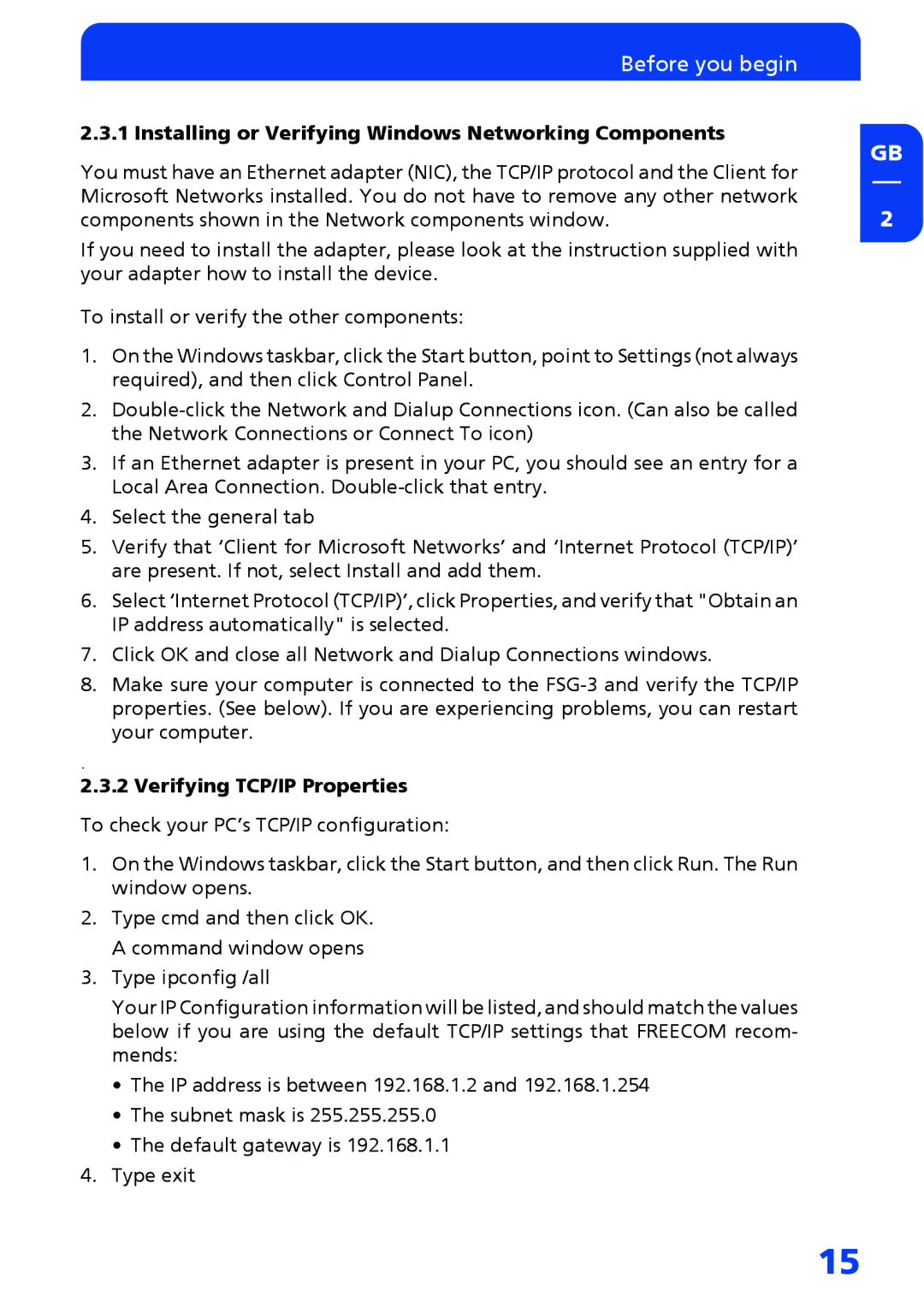
Before you begin |
| |
2.3.1 Installing or Verifying Windows Networking Components | GB | |
You must have an Ethernet adapter (NIC), the TCP/IP protocol and the Client for | ||
| ||
Microsoft Networks installed. You do not have to remove any other network | 2 | |
components shown in the Network components window. | ||
If you need to install the adapter, please look at the instruction supplied with |
| |
your adapter how to install the device. |
| |
To install or verify the other components: |
|
1.On the Windows taskbar, click the Start button, point to Settings (not always required), and then click Control Panel.
2.
3.If an Ethernet adapter is present in your PC, you should see an entry for a Local Area Connection.
4.Select the general tab
5.Verify that ‘Client for Microsoft Networks’ and ‘Internet Protocol (TCP/IP)’ are present. If not, select Install and add them.
6.Select ‘Internet Protocol (TCP/IP)’, click Properties, and verify that "Obtain an IP address automatically" is selected.
7.Click OK and close all Network and Dialup Connections windows.
8.Make sure your computer is connected to the
.
2.3.2 Verifying TCP/IP Properties
To check your PC’s TCP/IP configuration:
1.On the Windows taskbar, click the Start button, and then click Run. The Run window opens.
2.Type cmd and then click OK. A command window opens
3.Type ipconfig /all
Your IP Configuration information will be listed, and should match the values below if you are using the default TCP/IP settings that FREECOM recom- mends:
•The IP address is between 192.168.1.2 and 192.168.1.254
•The subnet mask is 255.255.255.0
•The default gateway is 192.168.1.1
4.Type exit
15
